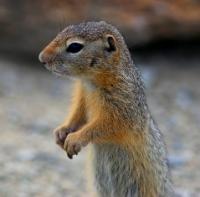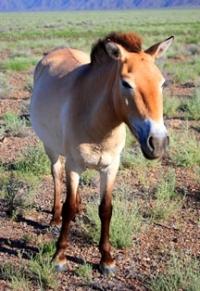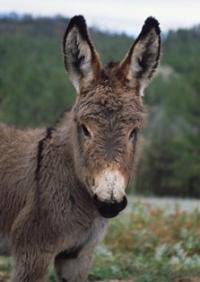You are here
Deserts in Betpak-Dala.



Walking routes in Aksu-Jabagly reserve.
«A lake is the landscape's most beautiful and expressive feature. It is earth's eye; looking into which the beholder measures the depth of his own nature»
Henry David Thoreau.
Top 10 Walks in near Astana.
To this type of desert are the gravelly spaces of the deserts of the northern zone, most often confined to flat table elevations - Kyras, less often - to areas of folded structures (eastern part of the Betpak-Dala desert).
The most significant difference between the soils of this type of desert and the previous one is their saltwort. According to E. Lobov (1960), the rocky deserts of the northern zone belong both to the Kazakh province of low-carbonate gray-brown soils (the eastern part of Betpak-Dala, etc.), and to the Turanian province of carbonate gray-brown soils (gravelly areas of the south- Eastern Ustyurt).
The soils of the rocky deserts of the northern zone, as well as the rocky deserts of the southern zone, are characterized by the presence of gypsum accumulations at a certain depth. The soil is skeletal, with an abundance of rubble, cartilage, pebbles.
The soil surface is dotted with gravel (or pebbles), or the gravel is soldered to the surface crust of the soil. The boiling starts from the surface, with a maximum of carbonates in the upper horizon, and the number of carbonates downwards decreases.
These soils differ from typical gray earth of the south and from more northern brown and chestnut soils. The accumulation of carbonates in the surface layer is due to the absence of the leaching regime throughout the year: precipitation is poorer here than in the more northern zones of brown and chestnut soils, and there is no clearly pronounced seasonal maximum of moistening, as in the ephemeral desert with typical gray earth where leaching sets in spring mode.
Due to the lack of removal of decomposition products of organic residues, carbonate accumulates in the near-surface soil horizons. The soil contains no more than 1% humus. Its characteristic feature is a compacted saline illuvial horizon at a depth of 12 – 20 cm.
In the lower part of which, from a depth of about 25 cm, accumulations of gypsum are observed; sometimes gypsum starts deeper (from 80 - 90 cm). On Ustyurt under a loose gypsum horizon, there are clusters of gypsum, the formation of which is associated (V.V. Dobrovolsky) not with modern soil processes.
But with a different geomorphological and geochemical environment of the past (Neogene of the Quaternary time). According to E. V. Lobova (1960), these gypsums were deposited in the lakes and lagoons of the Sarmatian or Akchagyl Sea during a regression.
Sometimes saline soils and to the surface itself contain easily soluble salts. Often, soda is found in them from the surface, i.e. they are saline. The vegetation is basically the same as in the rocky deserts of the southern zone, but the degree of coverage here is usually greater.
Wormwood and typical saltwort prevail. Stony desert in some places turns into clayey saltwort wormwood desert, alternating with it. Wormwood and (Salsola arbuscula; in the east, in Betpak-Dala, the Mongolian species - S.
laricifolia) dominate in such stony deserts on the elevated terrain of the relief; stony and closer rock base. In the depressions, as well as in the wormwood in the clayey desert, biyurgun prevails. Stony deserts are common in the southeastern part of Ustyurt (gravelly clayey desert) and in the eastern part of Betpak-Dala.
The southeastern part of Ustyurt is a gravelly clayey plateau with a sparse vegetation cover of wormwood and Salsola arbuscula, with biyurgun on cortical saltwort and depressions. The eastern part of the desert Betpak-Dala is a hilly residual plain with a Caledonian folded structure, which is a continuation of the Kazakh lowlands.
Elevations (Itarka), dome-shaped hills, low ridges alternate with countless depressions of different size and shape. Paleozoic sedimentary rocks and igneous (granites) come to the surface. The surface of flat hills is covered with shale rubble.
Characteristic are piling up granite boulders with peculiar figures of weathering. The igneous, metamorphic, and sedimentary rocks enclose fresh fissure waters. On the slopes of stony hills grow dry prickly shrubs, on flat low ground - wormwood. Eurotia (Eurotia) is found on sandy soils, and biyurgun on takyr land and Salsola arbuscula.
In the stony deserts of the northern zone, there are generally the same animals as in the neighboring clay wormwood deserts. The spaces of the stony deserts are unsuitable for farming and are used as pastures; their productivity is very low.
Authority:
N. A. Gvozdetsky, N. I. Mikhaylov. "Physical geography of the USSR. Asian part. The edition third corrected and added. Moscow "Thought" of 1978. http://tapemark.narod.ru/geograf/1_5_5.html
Photos by
Alexander Petrov.






